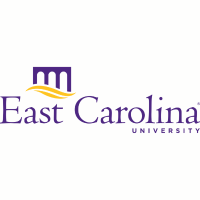
- Find Your College
- Scholarships
- Pay for College
-
Articles
- COLLEGES
- Most Recent
- Affordability & Cost
- College Search
- Comparisons
- College Majors & Minors
- Myths
- News & Trends
- Tips, Tools & Advice
- Admissions
- Most Recent
- ACT & SAT
- College Admissions
- College Applications
- Myths
- Online Colleges
- Questions & Answers
- About
- Home
- >
- Browse All Majors
- >
- Health Professions And Related Programs
- >
- Registered Nursing, Nursing Administration, Nursing Research and Clinical Nursing
- >
- Public Health/Community Nurse/Nursing
Public Health/Community Nurse/Nursing
Select Type of Degree:
Select State:
|
#1

California State University-Long Beach
|
|||||||||||
|
#2

University of Pittsburgh-Pittsburgh Campus
|
|||||||||||
|
#3

East Carolina University
|
|||||||||||
|
*The estimated net prices above are College Raptor’s estimate. Please contact the college financial aid office for actual net cost figures.
|
|||||||||||
| Institution | Scaled Score | Acceptance Rate | Annual Degrees Awarded | SAT Score | Est. Net Price * | Median Starting Salary | Save | |
|---|---|---|---|---|---|---|---|---|
 California State University-Long Beach Long Beach, CA Annually, California State University-Long Beach grants around 1284 degrees...view more | 100 | 47% | 111 | 1,030 – 1,240 | $9,731 | $54,715 | ||
 University of Pittsburgh-Pittsburgh Campus Pittsburgh, PA Annually, the University of Pittsburgh-Pittsburgh Campus grants around 446...view more | 47 | 50% | 1 | 1,290 – 1,460 | $24,338 | $60,236 | ||
 East Carolina University Greenville, NC Annually, East Carolina University grants around 351 degrees to those...view more | 37 | 90% | 2 | 1,050 – 1,230 | $14,470 | $59,454 |
*The estimated net prices above are College Raptor’s estimate. Please contact the college financial aid office for actual net cost figures.
About Public Health/Community Nurse/Nursing
Public Health/Community Nurse/Nursing programs prepare registered nurses to promote health and provide preventive and curative nursing services for groups or communities under the supervision of a public health agency. Includes instruction in community and rural health, family therapy and intervention, disease prevention, health education, and community health assessment.
California awards the most Postbaccalaureate certificates in Public Health/Community Nurse/Nursing of all US states with 111 degrees being granted last year. Students interested in Public Health/Community Nurse/Nursing can expect approximately 13% percent of their fellow classmates to be men and 87% percent to be women. Most students graduating in this field earn a Bachelors degree. The average annual income for a graduate with a bachelor's degree in Public Health/Community Nurse/Nursing is $57,500.
Careers
For Public Health/Community Nurse/Nursing majors, some of the most in demand jobs include Registered Nurses, Nurse Practitioners and Nursing Instructors and Teachers, Postsecondary. Additionally, Public Health/Community Nurse/Nursing graduates may find a top paying job, such as Nurse Practitioners or Registered Nurses.
Top Paying Careers
These are the highest paying careers for Public Health/Community Nurse/Nursing majors.
| Career | Median Salary | Average Annual Job Openings | Employment 2022 | Employment 2032 | % Change | |
|---|---|---|---|---|---|---|
| Nurse Practitioners | $129,210 | 26,300 | 266,300 | 384,900 | 45% | |
| Registered Nurses Acute Care Nurses Advanced Practice Psychiatric Nurses Critical Care Nurses Clinical Nurse Specialists | $93,600 | 193,100 | 3,172,500 | 3,349,900 | 6% | |
| Nursing Instructors and Teachers, Postsecondary | $79,940 | 8,800 | 85,900 | 101,500 | 18% |
Most In-Demand Careers
These are the careers in highest demand for Public Health/Community Nurse/Nursing majors.
Student Demographics




Subscribe to Our Newsletter
Join thousands of students and parents learning about finding the right college, admissions secrets, scholarships, financial aid, and more.

College Raptor, Raptor, InsightFA, FinanceFirst, and “The Right College. The Best Price.” are registered trademarks of College Raptor, Inc.


